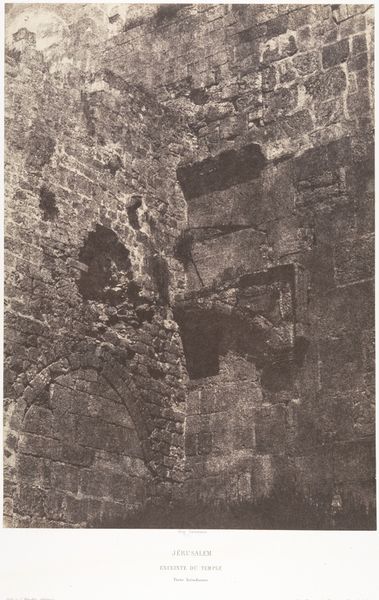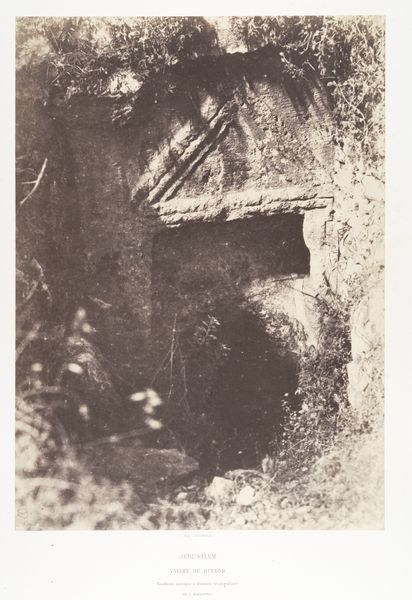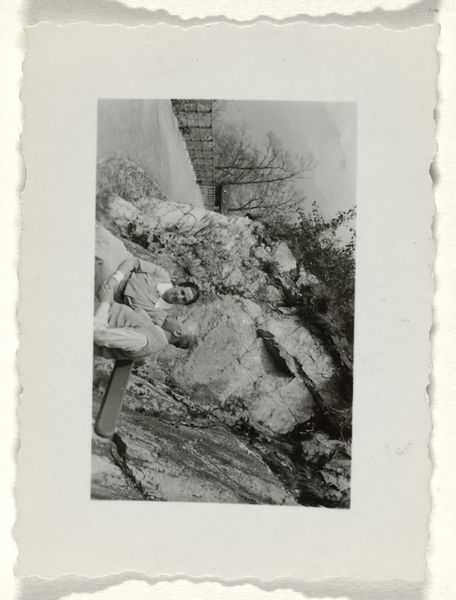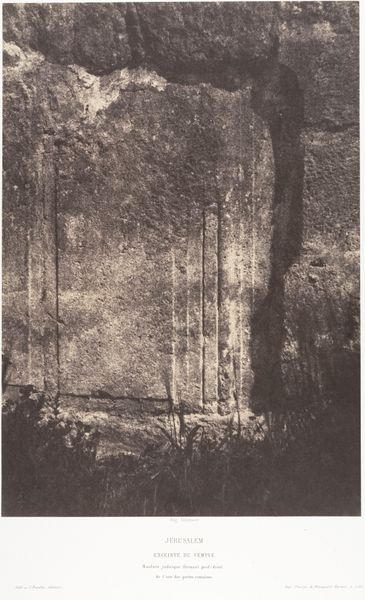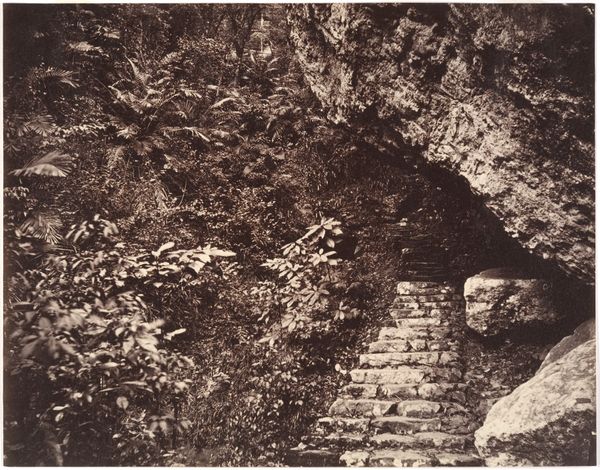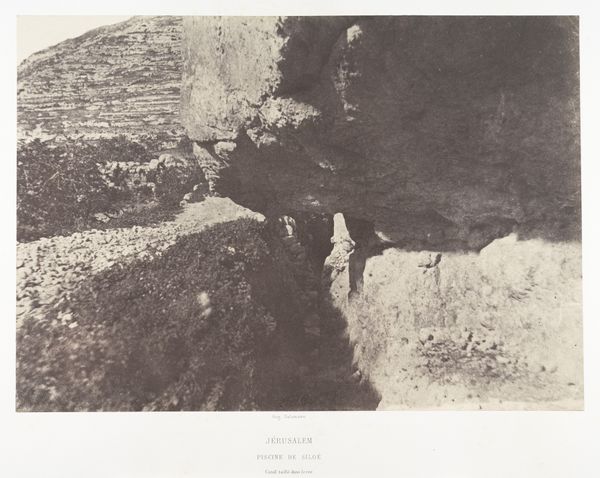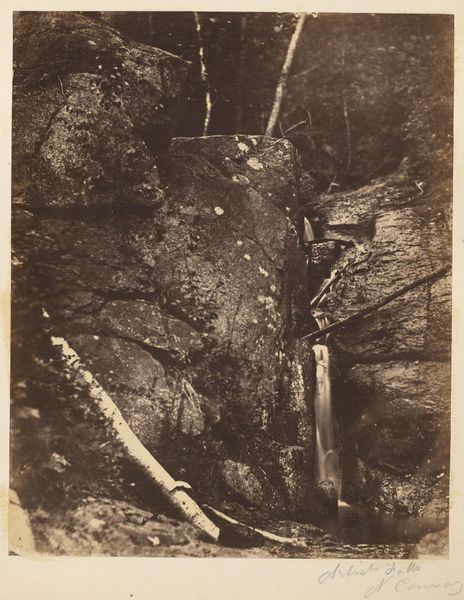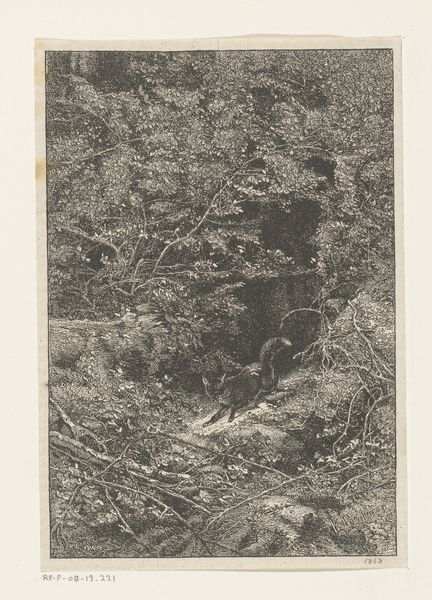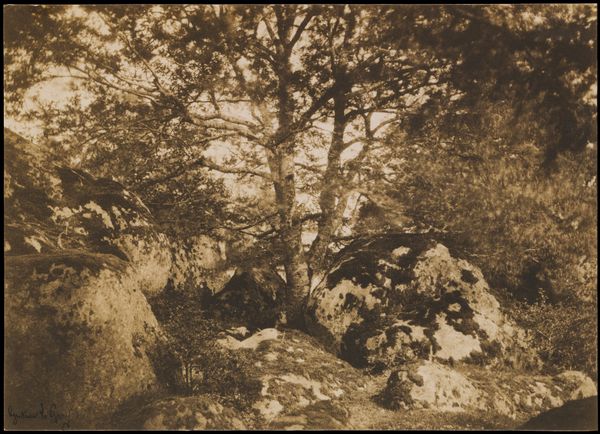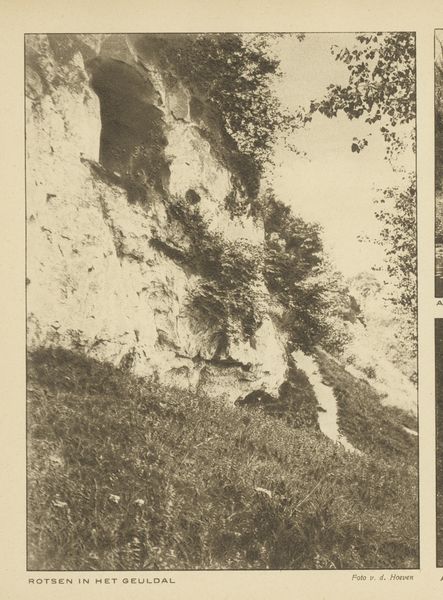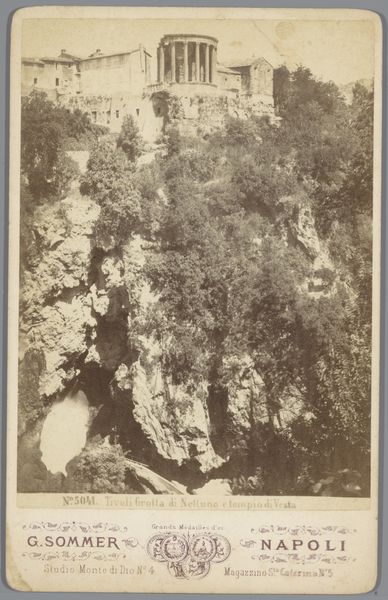
photography, architecture
#
landscape
#
photography
#
islamic-art
#
architecture
Dimensions: Image: 33.3 x 23.3 cm (13 1/8 x 9 3/16 in.) Mount: 59.8 x 44.8 cm (23 9/16 x 17 5/8 in.)
Copyright: Public Domain
Auguste Salzmann made this photograph of Jerusalem's Ecce Homo Arch using the salted paper process. This photographic process was promoted by figures such as Henri Le Secq and Louis Désiré Blanquart-Évrard, who were central figures in the institutionalisation of photography as an art form. Salzmann was commissioned to produce archaeological evidence in the Holy Land, and to bolster claims of French political and religious influence in the region. The image's meaning comes from its visual codes, cultural references, and historical associations. Consider how the geography, religion, and political movements influenced the image. The photograph presents a romantic view of the city, focusing on ancient ruins and religious sites and thereby reinforcing the idea of Jerusalem as a timeless and sacred place. Historians can interpret art using a variety of resources, including historical documents, critical analyses, and cultural studies. The image's social and institutional context is essential to understanding its meaning and significance.
Comments
No comments
Be the first to comment and join the conversation on the ultimate creative platform.
